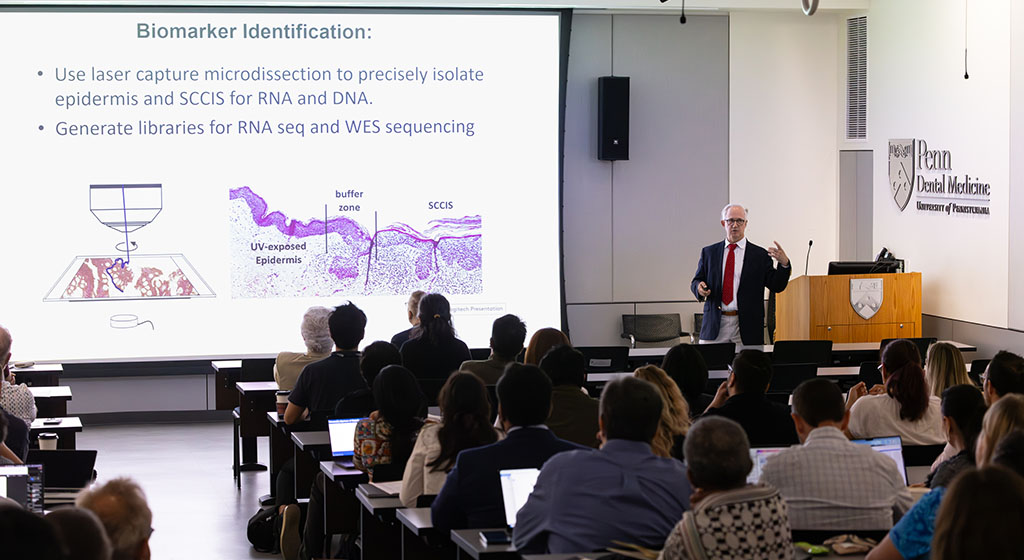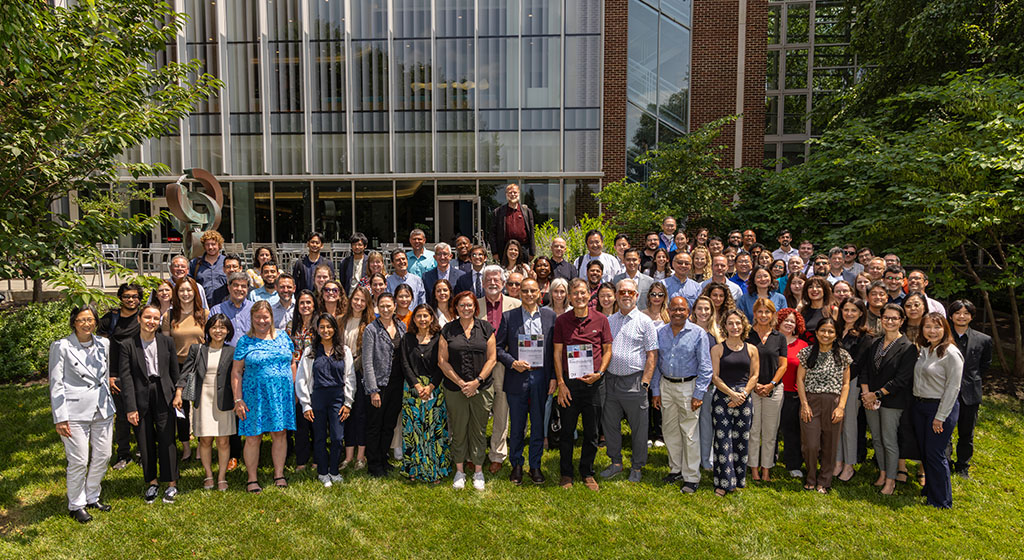Penn Periodontal Conference Presents Leading Research in the Field
Philadelphia — Penn Dental Medicine brought together nearly 180 attendees from across the country and around the world for the 7th Penn Periodontal Conference, providing a forum to exchange the latest science in the field of periodontal research. The Conference, held July 28-31, was also a key event in the Department of Periodontics’ 70th Anniversary celebration.
Held biennially, Penn Dental Medicine launched the first Penn Periodontal Conference in 2013 to not only bring together leading researchers in their respective fields of study but also to foster the development of junior researchers working with them. That dual focus – scientific excellence and promoting the next generation of scientists – has remained a primary goal of the conference.
“We were honored to host nationally and internationally recognized researchers on a wide range of topics,” says Dr. Dana Graves, Vice Dean for Scholarship & Research and Interim Chair of the Department of Periodontics, who was Co-Chair of the conference with Dr. George Hajishengallis, Thomas W. Evans Centennial Professor in the Department of Periodontics. “The high level of science presented was inspiring.”
The program speakers represented 21 universities and institutions within the United States, and seven international schools. The four-day scientific program featured presentations that addressed periodontal-related research topics across four key categories: microbiology, inflammation and systemic disease, pathogenesis, and regeneration. In addition, there was a session of junior investigator presentations.
The two keynote speakers included John Seykora, MD, PhD, Professor, Departments of Dermatology and Pathology, University of Pennsylvania Perelman School of Medicine, who spoke on “How Analysis of Stratified Squamous Epithelium Informs our Understanding of Cancer and Inflammatory Diseases” and Pamela G. Robey, PhD, Senior Investigator, National Institute of Dental and Craniofacial Research, who presented “Stem Cells for the DOC Complex: What They Are and What They Can Do.”
The program was structured to encourage interaction among participants with one afternoon free for networking and a poster presentation session that provided the opportunity for participating researchers to share their work and talk one-on-one with each other.
“There were lively discussions and a great exchange of information,” notes Dr. Hajishengallis. “We hope the connections made and research shared will lead to new collaborations.”
The next Penn Periodontal Conference is anticipated to be held in 2027.





